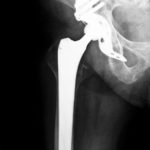 Total Hip Replacements Just Got Better!
Total Hip Replacements Just Got Better!
Thirty years ago, I encountered my first “fresh”, post-surgical total hip replacement (THR) patient. This gentleman was lying in his hospital bed sporting a pretty gruesome, 8-inch surgical wound along the side of his hip/pelvis which was held closed by a series of metal staples.
As a physical therapist, I was well versed in a list of post-surgical, THR precautions such as “Do not allow the surgically repaired hip/leg to abduct.” (sweep out to the side), “Do not allow the hip/leg to turn inward.”, and “Sleep with a pillow in between the legs.” These rehabilitation rules were in place to prevent potential hip dislocations which could readily occur in the early stages of healing if “given the right circumstances”.
My goals during the remainder of my patient’s hospital stay was to teach him the proper (i.e. safe) way to get out of bed, walk down the hallway with his walker, and how to navigate stairs. Once my patient left the hospital, physical therapy would continue, either in a rehab center or at home for about 3 weeks. This would be followed by PT at an outpatient facility where this patient would be weaned to a cane and then taught to walk again without an assistive device. Strengthening of the leg would also be addressed along the way. This whole process would take many long months.
In recent years, a new surgical technique for THRs has made its way to the US (it’s been employed in Europe for 60+ years). This method is far less traumatic to the body, has far fewer post-op precautions, and significantly reduces the patient’s healing time: introducing the anterior approach.
More specifically, a THR via the anterior approach sports a smaller, 4-inch incision which is glued shut—no stitches or staples required, a much-reduced hip dislocation rate, a shorter/earlier rehabilitation, and improved accuracy of limb length and implant position. With this procedure, in contrast with the traditional lateral approach where the patient’s gluteus medius muscles are cut through, there is no muscle cutting necessary!
The only downside to having a THR with an anterior approach is that there aren’t many Orthopedists who have been trained in this newer approach, and those who have, need hospitals willing to invest in a surgical table which runs about $100,000! But be encouraged, these surgeons (and hospital suites) are out there. You just need to find them.